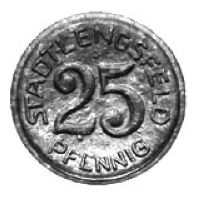
Example #1
Front of the coin showing "Stadtlengsfeld" and the value of "25 Pfennig" (100 Pfennig were one German Mark).
After construction work of the factory was completed in 1889, it still took some time to complete the setup of the kilns; various trial runs and readjustments were needed until the first firing under normal production conditions could take place in 1890; in fact the company itself was officially registered operational on August 20th 1890. Such initial problems were actually quite common in the porcelain industry and often resulted in companies losing quite a lot of money before they could actually start production. The Koch & Schnorr company however ran into even more problems after director Hegemann in 1893 started to focus on export production only, a business model that proved insufficient to support the factory on its own, resulting in the sale of the factory late in 1895 due to bankruptcy of the company.
The factory was taken over by Carl Frisch and his family who registered the change of ownership on February 7th 1896 and instantly initiated the construction of additional kilns and additional buildings. Only four years later some parts of the factory containing the printing workshop, the packing station and the storage for whiteware completely were completely destroyed by a blaze. With enormous effort and slightly larger than before, these were quickly rebuilt. Frisch had to invest everything he owned, still the factory ran into financial problems. In September 1901 the workers were locked out; in October the company had to file for bankruptcy. That was too much for Carl Frisch, who committed suicide.
On June 13th the assets were taken over by a partnership consisting of four members, Büchner, Seiffert, Reuss & Beckmann. The first manager of the re-founded stock corporation was Hans Grimm who had previously worked for Frisch. Expectations were high and the pressure was enormous: Grimm retired as manager on July 2nd and was replaced by Ludwig Ross who in turn retired in favour of Wilhelm Schreiber on January 27th 1902. The factory was in constant trouble during the next years, resulting in various changes in ownership until it was run by Ludwig Hermann and a Mr. Gramss. On February 4th 1909 the factory was damaged by flooding and the resulting production halt and repair work drastically decreased company funds.
This further affected work and in 1911 the company was nearly bankrupt again. Ludwig Hermann committed suicide, leaving Gramss as manager. After restructuring parts of the factory the company seemed to recover and soon produced large amounts of tea and coffee sets; at the same time the number of workers slowly rose up to 400 in 1913. Around that time, the company also started producing items completely in cobalt blue or with 'Strohblume' (Strawflower) a 'Zwiebelmuster' (Blue Onion) decoration types. In 1916 the factory was flooded again; on January 3rd 1918 the horse stables burned down and between December 24th 1918 until June 21st 1919 the factory had to be closed for four short periods because of coal shortages.
Following WWI the company was changed into a limited company (stock corporation) in 1919. On March 15th 1920 work was stopped following the Kapp coup in Berlin; work restarted on March 22nd and in the year 1921 the factory actually produced money. In cases where the German mint was not able to produce enough money, for example at times with very high inflation rates or during a crisis, a special law enabled local officials under state supervision to make their own money. This so-called Notgeld was then produced in a few selected factories and was mostly made out of various easy accessible materials, like this fine example in grey-glazed ceramic :

Example #1
Front of the coin showing "Stadtlengsfeld" and the value of "25 Pfennig" (100 Pfennig were one German Mark).
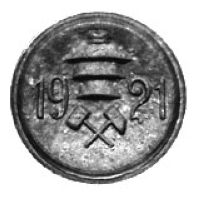
Example #2
Back of the coin with crossed hammers, dated 1921.
But not everything was negative: the year 1921 also saw the installation of a test array for insulators followed by the installation of a new air heating system in 1922 and between February 16th 1926 and December 31st 1927 the factory successfully tested the use of brown coal instead of hard coal for the firing process. On January 14th 1928 Mr. Scharf replaced Gramss as manager; on July 12th 1929 he proudly started the new test installation for insulators. In November however the factory is forced to cut back its workforce, resulting in the retirement of 50 people and the use of only four of five kilns in December.
Walter Luckhardt, who formerly worked in Königszelt (Silesia), became manager on June 1st 1930 and during this time the factory has a workforce of around 500 people; only three of the five kilns were used. In addition, the company decided to change its name from Porzellanfabrik Lengsfeld AG to Felda Porzellan, later Felda Rhön Porzellan; at the same time the workers are forced to accept a ten to fifteen percent reduction in wages. The next few years were relatively calm until Zimmermann retired and Truckenbrodt took over as proprietor on May 6th 1935.
World War II of course forced the factory to deal with the usual setbacks like shortage of staff and production materials. Even if the premises saw no damage during this period, the decoration building went up in flames in 1944 under suspicious circumstances. Following a short closure of the factory in December due to coal shortage, the decoration studio was rebuilt between January and May 1945. During autumn the same year, work is restarted with a wokforce of 78 employees under main shareholder Büchner who remained responsible until May 1946 when he was replaced by Mr. Götz. On November 6th the storehouse and packing area burns down, again there is no explanation to be found. Just after Gramss took over the factory in April 1947 another fire broke out in May and yet again destroyed parts of the warehouse. This setback is followed by two small floodings in January and February 1948.
After the founding of the German Democratic Republic in 1949 the factory that by now had seven round kilns was nearly instantly nationalized; in 1950 Mr. Hans Joachim Döhring became manager. Lots of people are confused by the names of the factory during this period but it is actually quite easy to explain: leaving the names aside one must simply know that until around 1955 every VEB per default belonged into a organisational unit named VVB. As there were no other factories in Stadtlengsfeld, the factory itself was also a VVB at the same time. That of course explains why it had two names until around 1955: VEB Porzellanwerk Stadtlengsfeld and VVB Keramik-Zweigbetrieb Stadtlengsfeld-Rhön.
In 1955 Mr. Rudolf Vogler became manager and in 1956 initilized small modifications of the kilns shortly before he was replaced in 1957 by Gerhard Henniger which in turn was replaced by Helmut Deisenroth in 1959 who run the factory until he retired, making room for Ernst Roland as new manager. Everything remained quiet until January 5th 1967 when a large blaze nearly completely destroyed the factory. Reconstruction was started and made good progress until May 19th when arson resulted in another large fire.
The year 1969 saw the founding of the Colditz combine which included the factories in Colditz, Freiberg, Annaburg, Lettin, Weißwasser and Stadtlengsfeld. Membership of the Stadtlengsfeld factory in this combine resulted in a modernization of the factory which included the construction of a new production building and the introduction of gas-fired tunnel kilns, the first of which is activated on June 12th 1970. Until 1972 three additional kilns of that type had been built and those four completely replaced the old round kilns. The number of employees had slowly increased proportionally to the expansion and at that time the factory employed 570 people.
Further modifications followed in 1973 and 1974 and in 1976 Eberhard Klug retired as director and was replaced by Helmut Börner. Over the next few years, the factory expanded even more; when Hartmut Kunath became director in 1982 he merely supervised the reconstruction of the existing railway connection and the replacement of the former oil heating with brown coal firing. Shortly before German reunification in 1989 the factory employed 680 people.
After German reunification, the company was restructured and privatized and during this process the number of employees was reduced to around 300 people until 1991. The Swiss businessman Robert Käppeli took over the company in August 1992 and installed Mr. Rathke as managing director and the following restructuring process once again reduced the number of employees, this time down to 162. In 1993 the stand-alone ceramics subsidiary SRI Keramik GmbH' was founded and from July onwards Erich J. Bruckert was sales manager; after some minor structural changes in the company however, Bruckert decided to leave the company in 1995.
Following the closure of the raw material processing unit after it was found cheaper to directly buy ready mixed porcelain masses in 1996, the number of employees once again was reduced, this time to a mere 90 people. The end of January 1998 saw the last firing of a tunnel kiln as it was replaced by a chamber kiln in Febuary. But business had not developed as had been expected and so on October 6th all remaining 75 employees together with the six remaining employees of the SRI Keramik GmbH laid down their work after it became known that the company was bankrupt; Dr. Michael Jaffé was then responsible for dissolving the company. It seemed that all was lost and the factory was doomed.
Former employee Erich J. Bruckert had different plans and so the brand name and nearly the complete range of Lengsfeld Porzellan molds was sold to the Triptis Porzellan GmbH & Co. KG. With the money from the deal a completely new company was founded under the name of Gilitzer Porzellan Manufaktur GmbH on the old premises, firing the kiln for the first time on October 11th 1999.
The new company started off fairly well and after reestablishing itself as a brand in 2002, first steps were made to expand the business; this in 2005 resulted in the takeover of the Wallendorfer Porzellanmanufaktur GmbH which was restructured to act more like a factory outlet, finally discontinuing the famous Wallendorf figurines in 2006. The Gilitzer factory positioned itself as a middle-sized supplier for glass and porcelain retailers all over Germany but in the end ran into financial trouble, forcing the company to file for insolvency in March 2007 and subsequently caused the later (November 2009) downfall of the factory in Wallendorf.
Parts of Thuringia, Bavaria and Hesse meet in an area named "Rhön" and the name "Felda" mentioned in some marks is the name of one river that runs through that area. The glider depicted in some marks represents the history of this area as it is the birthplace of German glider technology and home of lots of famous glider pilots.
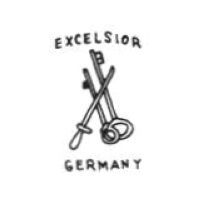
Image 011243-01-01
Used between 1889 and 1896, registered at the Landgericht Stadtlengsfeld (local civil court) on April 20th 1895.
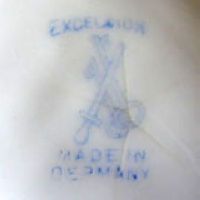
Image 011243-01-02
Used between 1889 and 1896, example of the "Excelsior" mark; "Made in Germany" clearly indicates use for export.
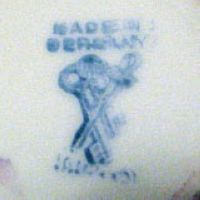
Image 011243-01-03
Used between 1889 and 1896, "Made in Germany" misprint (turned 180 degrees).
(Picture: Robert Meisner)
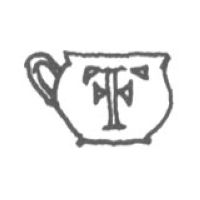
Image 011243-01-04
Used between 1889 and 1895 even if it was still registered in 1913.
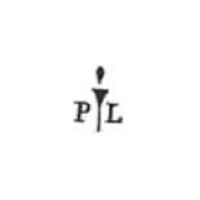
Image 011243-02-01
Used between 1896 and 1902 (period of Carl Frisch), registered at the Landgericht Stadtlengsfeld (local civil court) on March 23rd 1891.
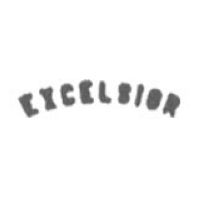
Image 011243-02/03-01
This mark consisting only of the tradename Excelsior was registered 1896 and deleted from the registry again in 1906.
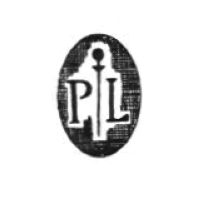
Image 011243-03-01
Used between 1902 and 1904 (period of Büchner, Seifert, Reuss).

Image 011243-03-02
Used between 1904 and 1908 (period of Wilhelm Schreiber).
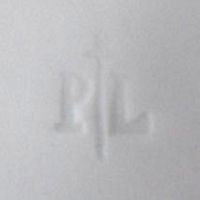
Image 011243-03-03
Used between 1904 and 1908, example of the impressed mark.
(Picture courtesy of
www.antique-salon.ru)
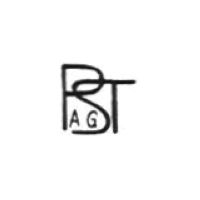
Image 011243-03-04
Used from 1908 until 1920 (period of Ludwig Hermann), registered at the RWZR under №·122·318 on October 11th 1909.
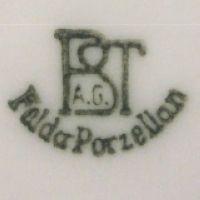
Image 011243-03-05
Used from 1908 until 1920, example of the previous mark above "Felda Porzellan" addition.
(Picture: forumuuu.com)
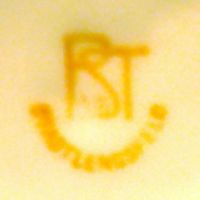
Image 011243-03-06
Used from 1908 until 1920, example above "Stadtlengsfeld".
(Picture: Bogumił Szyda)
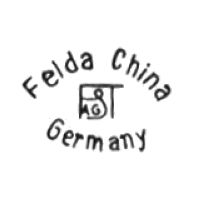
Image 011243-04-01
Similar mark also used between 1930 and 1935 (period of Walter Luckhardt), this was the export version with "Felda Choina".
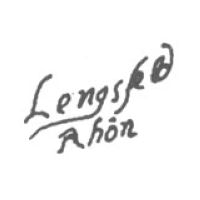
Image 011243-04-02
No date known, only the script "Lengsfeld, Rhön".
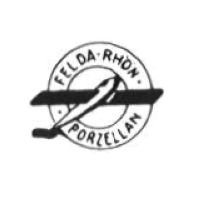
Image 011243-04-03
Used between 1935 and 1945 (period of Truckenbrodt).
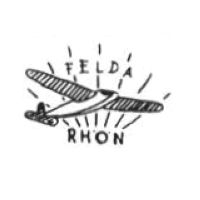
Image 011243-04-04
Used between 1933 and 1949, registered at the RWZR under №·461·380 on November 25th 1933.
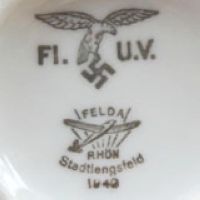
Image 011243-04-06
Used 194 on an item made for Luftwaffe use.
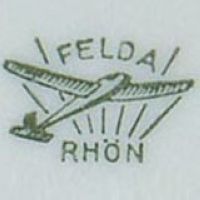
Image 011243-04-07
Used between 1933 and 1949. The time between 1945 and 1949 was the period of Götz.
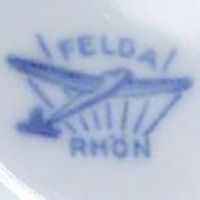
Image 011243-04-08
Used between 1933 and 1949, here in blue
(Picture: Angelika Kickbusch).
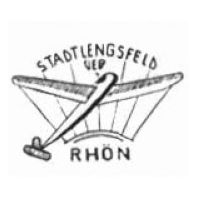
Image 011243-05-01
Used between 1950 and 1959 (period of Joachim Döring, later Rudolf Vogler).
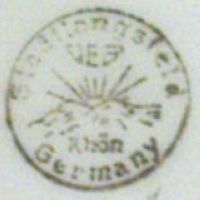
Image 011243-05-02
Used between 1955 and 1959, "Stadtlengsfeld" above "VEB" above "Rhön" over "Germany".
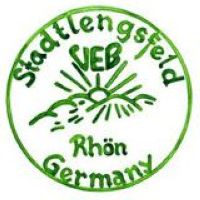
Image 011243-05-03
Used between 1955 and 1959, scan of the original template.
(Picture: Olaf Zies).
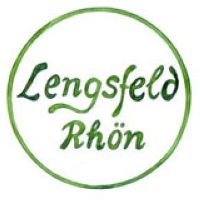
Image 011243-05-04
Used between 1955 and 1959, scan of the original template.
(Picture: Olaf Zies).
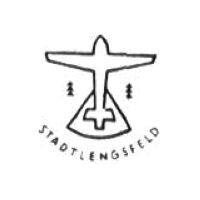
Image 011243-05-05
Used between 1959 and 1963 (period of Helmut Deisdenroth).
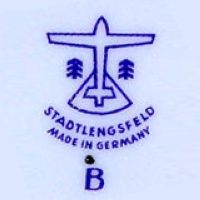
Image 011243-05-06
Used between 1959 and 1963, example in blue.
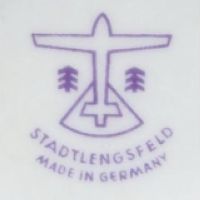
Image 011243-05-07
Used between 1959 and 1963, example in purple.
(Picture courtesy of
antique-salon.ru).
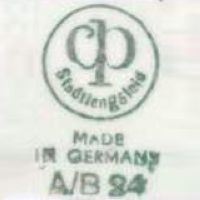
Image 011243-05-08
Used after 1963, the Colditz Porzellan logo including "Stadtlengsfeld"note the "Made in Germany".
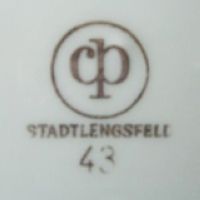
Image 011243-05-09
Used after 1963, simpler Colditz Porzellan logo above "Stadtlengsfeld".
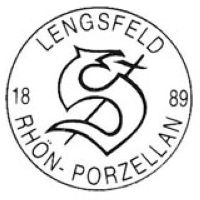
Image 011243-05-10
No further information.
(Picture: Olaf Zies).
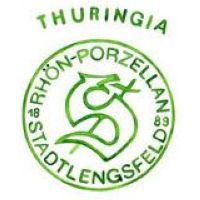
Image 011243-05-11
No further information.
(Picture: Olaf Zies).
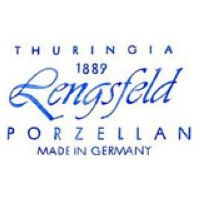
Image 011243-06-01
Used between 1990 and 1999, scan of the original template.
(Picture: Olaf Zies).
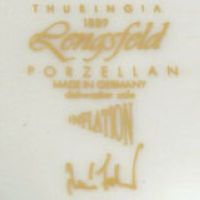
Image 011243-06-02
The last mark used by "Lengsfeld Porzellan" before they closed.
(Picture: Olaf Zies).
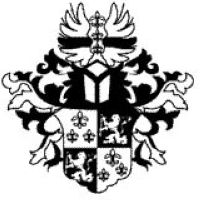
Image 011243-07-01
Large view of the basic coat of arms used from 1999 onwards.
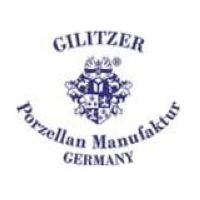
Image 011243-07-02
Used between 1999 and 2006 (period of Erich J. Bruckert).
(Picture: Olaf Zies).
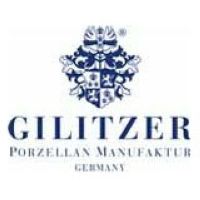
Image 011243-07-03
Used from 2006 onwards (period of Erich J. Bruckert).
(Picture: Olaf Zies).
© 2004-2025 C.S.Marshall, all rights reserved